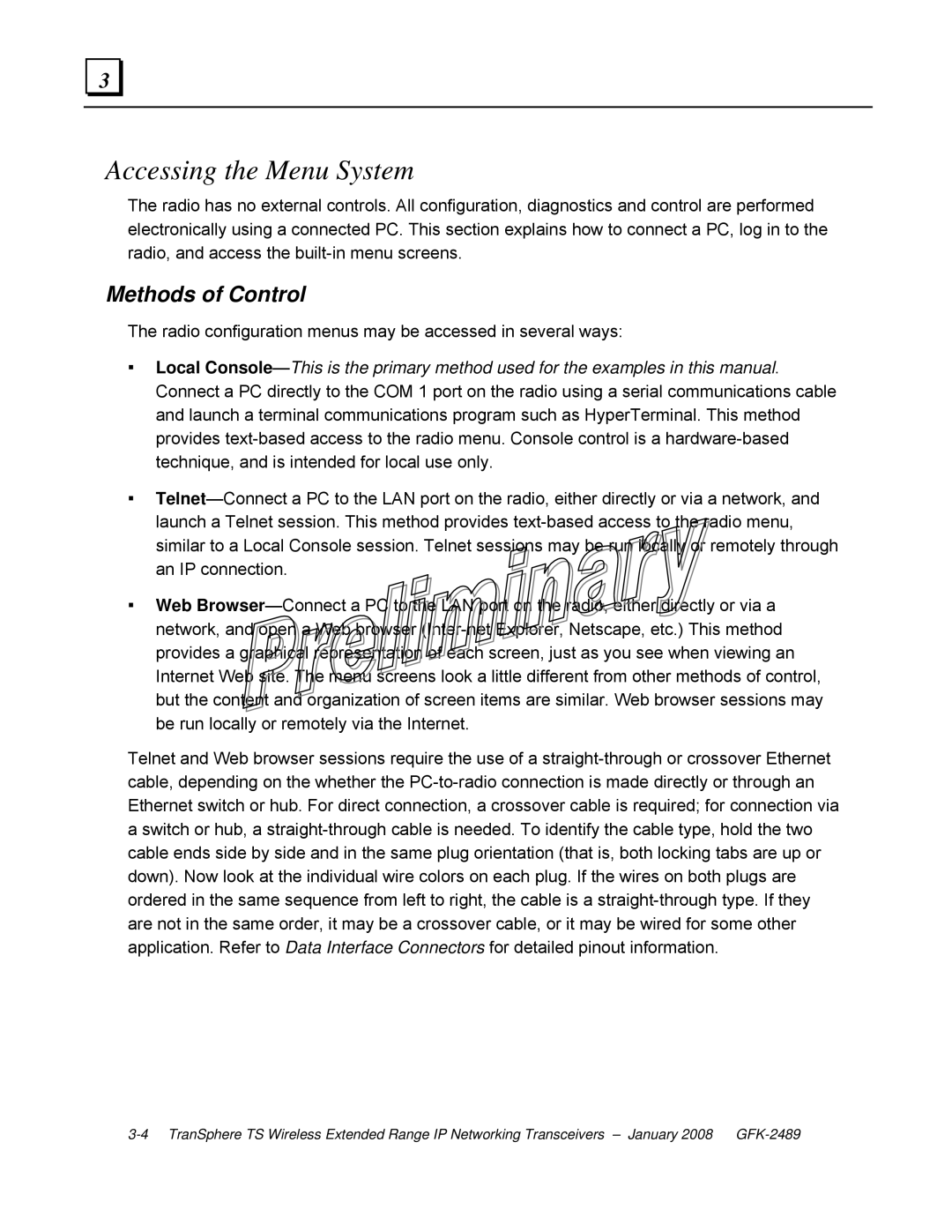Accessing the Menu System
The radio has no external controls. All configuration, diagnostics and control are performed electronically using a connected PC. This section explains how to connect a PC, log in to the radio, and access the built-in menu screens.
Methods of Control
The radio configuration menus may be accessed in several ways:
▪Local Console—This is the primary method used for the examples in this manual. Connect a PC directly to the COM 1 port on the radio using a serial communications cable and launch a terminal communications program such as HyperTerminal. This method provides text-based access to the radio menu. Console control is a hardware-based technique, and is intended for local use only.
▪Telnet—Connect a PC to the LAN port on the radio, either directly or via a network, and launch a Telnet session. This method provides text-based access to the radio menu, similar to a Local Console session. Telnet sessions may be run locally or remotely through an IP connection.
▪Web Browser—Connect a PC to the LAN port on the radio, either directly or via a network, and open a Web browser (Inter-net Explorer, Netscape, etc.) This method provides a graphical representation of each screen, just as you see when viewing an Internet Web site. The menu screens look a little different from other methods of control, but the content and organization of screen items are similar. Web browser sessions may be run locally or remotely via the Internet.
Telnet and Web browser sessions require the use of a straight-through or crossover Ethernet cable, depending on the whether the PC-to-radio connection is made directly or through an Ethernet switch or hub. For direct connection, a crossover cable is required; for connection via a switch or hub, a straight-through cable is needed. To identify the cable type, hold the two cable ends side by side and in the same plug orientation (that is, both locking tabs are up or down). Now look at the individual wire colors on each plug. If the wires on both plugs are ordered in the same sequence from left to right, the cable is a straight-through type. If they are not in the same order, it may be a crossover cable, or it may be wired for some other application. Refer to Data Interface Connectors for detailed pinout information.
3-4 TranSphere TS Wireless Extended Range IP Networking Transceivers – January 2008 GFK-2489

